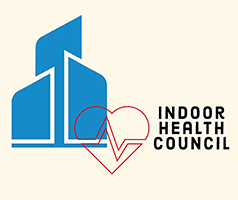Kaizen in Cleaning
“Kaizen” represents a universal standard of continuous improvement—“kai” meaning change and “zen” meaning good—that applies perfectly to health, since the question: “How healthy do you want to be?” has an answer with no upper limit for most of us (assuming it does not require anything too strenuous!).
Kaizen in Cleaning for Health (KCFH) may describe both how well we remove unhealthy substances from the environment now, and how we can improve that process—baby-step by baby-step—in the context of different customer needs.
KCFH may be timely given the commoditized nature of the cleaning industry combined with the rapidly emerging and growing awareness of unhealthy substances indoors (e.g., SARS-CoV-2 on surfaces and in the air)—and the need to mitigate the risk through better cleaning, hygienic steps, indoor monitoring and measurement.
Toyota perhaps best sums up what Kaizen means in practice:
“We view errors as opportunities for learning. Rather than blaming individuals, the organization takes corrective actions and distributes knowledge about each experience broadly. Learning is a continuous company-wide process as superiors motivate and train subordinates; as predecessors do the same for successors; and as team members at all levels share knowledge with one another”—The Toyota Way document 2001, Toyota Motor Corporation
Indoor Health Council believes two steps are needed to benefit from this global success tool (Kaizen):
Step 1: Establish a Kaizen Cleaning Standard
“What is a standard? A standard is an agreed, repeatable [and often voluntary] way of doing something. As such, a standard provides precise criteria that can be used consistently as a basis for comparison and a reference point against which other things can be evaluated for quantitative and qualitative value. Standards, therefore, are designed to increase the reliability and effectiveness of goods and services and to offer a reasonable and agreed-upon road map of industry best practices. The most effective standards are developed through a consensus-based process to ensure balance, practicality, and market value.” (ISSA)
Step 2: Establish a Kaizen Certification
“What is Certification? Once a standard has been developed and published, the question is inevitably going to come up whether an individual, organization, product or system meets the standard [italics ours]. This is where certification enters the equation, allowing for demonstrated compliance with the criteria and requirements. Certification should be directly based on the provisions of the standard, and—similar to the standard itself—can apply to an individual, organization, product, process, or system. There are many approaches to how compliance is judged and certification may be awarded. Some programs allow for self-certification while others rely on peer review. Without a doubt, the most reliable programs are those that require demonstrated knowledge or compliance, verified by an independent assessor or auditor.” (ISSA)
Kaizen Certification
Proper, professional cleaning should not be left to chance, and a directory of all Kaizen Certified workers—having access to online training and perhaps tiers of education—would highlight those devoted to continuous improvement with cleaner, healthier environments resulting.




